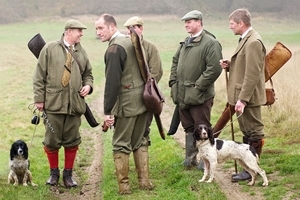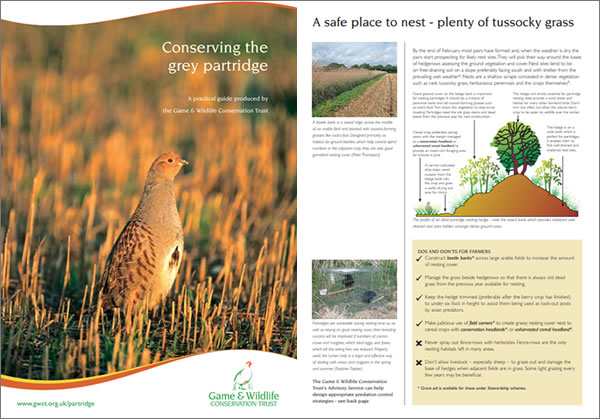 The grey partridge is no longer the prolific gamebird it once was. In most districts it is now either absent or uncommon. In these circumstances partridges should not be shot. The only exception is where careful management has produced a shootable surplus. Some properties still produce these surpluses in good breeding years and, provided not more than 30% of the autumn population is shot, the harvest is sustainable.
The grey partridge is no longer the prolific gamebird it once was. In most districts it is now either absent or uncommon. In these circumstances partridges should not be shot. The only exception is where careful management has produced a shootable surplus. Some properties still produce these surpluses in good breeding years and, provided not more than 30% of the autumn population is shot, the harvest is sustainable.
Unless carefully managed, the shooting of released red-legged partridges can have a devastating effect on wild greys at a low density because of the risk of over-shooting. Precautions must be taken to avoid this.
Six golden rules for game shooters
- Do not shoot wild grey partridges if you have fewer than 20 birds per 250 acres (100 hectares) in the autumn. Below this level the population has little ability to compensate for shooting losses.
- Stop shooting wild grey partridges as soon as the threshold of 20 birds per 250 acres (100 hectares) is reached, for the same reason.
- Avoid shooting grey partridges after the end of December. Birds pair up in the new year and shooting at this time reduces the breeding stock.
- Never shoot at grey partridges that are in pairs.
- With driven redleg or pheasant shooting, take special precautions to ensure that wild greys are not shot at the same time.
- Warn the guns if grey partridges are likely to be on the drive.
- Tell the guns to watch out for higher birds in tight coveys that might be greys. Tell them, if in doubt, not to shoot. Perhaps fine them if they shoot greys!
- Arrange a system of whistles for beaters to warn guns that greys have been flushed - their distinctive call also helps to identify them.
- Have observers in the line of guns to do the same.
- DO NOT SHOOT GREY PARTRIDGES AT ALL UNLESS YOU ALSO TAKE STEPS TO CONSERVE THEM.
Partridge management for shooting
Knowing the number of partridges on the ground is the minimum requirement for shooting.
The autumn count is carried out immediately after harvest by driving across stubbles in the early morning or late evening and recording the size of all coveys encountered. Refinements are to age and sex the birds, and to count the pairs in spring.
Unmanaged land should hold on average 4.5 breeding pairs on 250 acres (100 hectares). With annual losses of 55%, this implies that 20 birds per 250 acres are required in the autumn just to maintain numbers. At lower densities shooting should not take place.
Restocking with grey partridges reared on a game farm almost always fails as a means of restoring stocks. Most, if not all, are killed by predators within a few weeks of release. Essential components of conserving wild partridge stocks are habitat management and legal predation control. We have produced separate guidelines for restocking grey partridges to establish a wild breeding population once again.
Photo credit: Andy Hook

Our free colour 8-page guide contains vital information about grey partridge, including advice on what you can do to reverse their decline.
Download FREE >